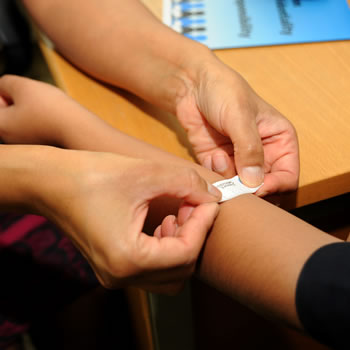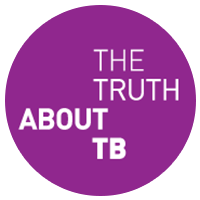 What does a test for latent TB involve?
What does a test for latent TB involve?
You may be offered either one of two different tests for latent TB, a TB skin test (known as a TST or Mantoux) or a blood test (known as an IGRA).
The test may be taken at your local GP practice, in a specialist TB clinic or occasionally in a local community setting. The doctor, nurse or other healthcare professional that performs the test will talk you through the test and possible outcomes, answer any questions you may have, and advise when you can expect the results.
The person taking the test may also ask a number of questions, to help identify your risk of TB:
- if you were born in, or have strong links to, particular countries
- whether you know anyone who has had TB
- if you have any long-term illnesses, such as HIV
- if you currently have any unexplained symptoms.
Skin test: A tiny amount of TB extract is injected under the skin on your forearm. If your body has come into contact with TB, the skin becomes raised and red. You will need to return to the test centre between 48-72 hours later for the doctor or nurse to measure and interpret the results.
Blood test: A small amount of blood is taken from your arm and sent to a laboratory. You will be told when to expect the results.
If you are not yet registered with a GP you can find out more about accessing NHS services by reading this leaflet or you can find your nearest GP using our GP service finder.
I have been offered other tests with my TB test. Tell me more about these?
You may be offered tests for other conditions that can be found in someone’s blood (known as blood-borne viruses), before they start causing any obvious illness. These include viruses such as HIV and hepatitis B, which, like TB, can be treated in order to stop them becoming more serious and causing problems in the future. If this is the case, these tests will be explained to you and you will be asked to give your permission for these tests to be done.
What does my latent TB test result mean?
If you have received a positive test result:
This means that you have TB bacteria in your body, but try not to worry because latent TB can be cured with a course of antibiotics. Your GP will refer you to a specialist TB clinic. You will then see a TB doctor or TB nurse who will offer you support and treatment for latent TB. It is also worth knowing that before treating you for latent TB they will do some final tests to make absolutely sure you do not have active TB.
If you have received a negative test result:
This means that you do not have TB bacteria in your body. However, there is a small chance that you might breathe in TB bacteria in the future. It is useful to remember the most common symptoms of active TB and see your GP if you notice them:
- a cough which lasts for three weeks or longer
- fever (a high temperature)
- night sweats
- weight loss
- no appetite
- tiredness.
